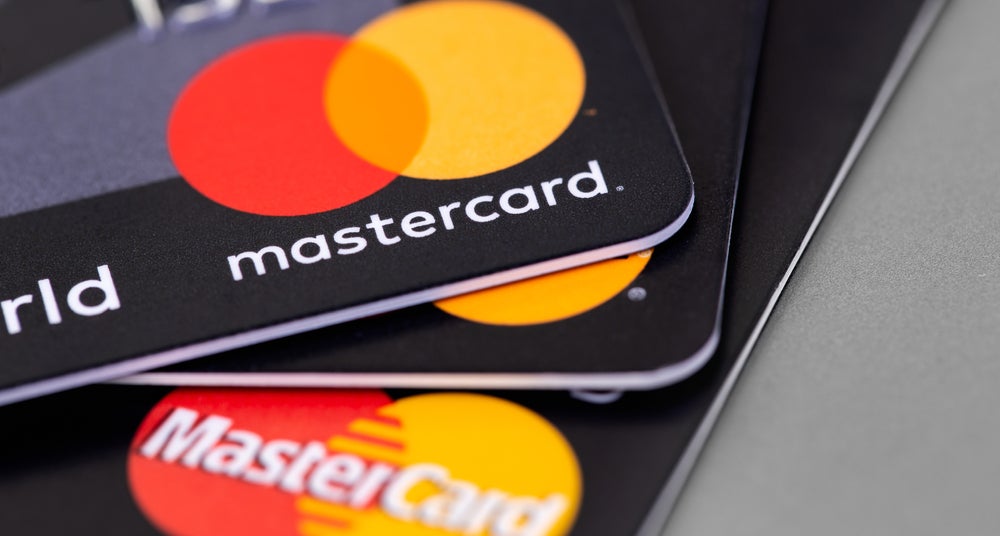
The uncontested leadership of Visa and MasterCard could start facing significant challenges. New technologies are evolving fast and giving space to a new set of stakeholders, while National schemes are evolving and gearing up to grab the opportunity. Sara Perria reports
The physical world of card payments is a two-headed oligarchy, with Visa and MasterCard the undisputed rulers. The US global schemes both posted double digit growth in 2012, showing no sign of wanting to invert the concentration-trend that has shaped the cards industry since its inception.
However, the payments landscape is moving fast and significant innovations are threatening the status quo: from mobile payments to e-commerce, ‘alternative’ methods are seeing a multitude of new stakeholders in what is still a level playing field. The American schemes have the money to invest but, as for now, their dwarf-competitors could well jump on the giants’ shoulders and have a much better view of the industry’s future.
The card-non-present environment – still far from being of widespread usage – is not the only one to hide potential surprises. The unexpected threat could come from a wise reorganisation of national schemes, not yet ready to lay down their arms, despite the increasingly aggressive strategy deployed by the global schemes.
An e-democracy
Mobile and e-payments have not only brought about a technological challenge, but also a revolution in the structure of the industry, where new players – from telcos to a whole new range of software start-ups -can find a place unthinkable in a card-based landscape.
How well do you really know your competitors?
Access the most comprehensive Company Profiles on the market, powered by GlobalData. Save hours of research. Gain competitive edge.

Thank you!
Your download email will arrive shortly
Not ready to buy yet? Download a free sample
We are confident about the unique quality of our Company Profiles. However, we want you to make the most beneficial decision for your business, so we offer a free sample that you can download by submitting the below form
By GlobalDataNew names have come to the fore: PayPal is the first that comes to mind when speaking of e-payments, not Visa or MasterCard. The e-Bay payment platform has posted a 23% year-on-year increase in net revenue in the third quarter to end 30 September 2012, with revenues reaching $1.4bn.
Significantly, PayPal has launched a series of products marking the expansion of its e-commence platform into the bricks-and-mortar world. In February 2012, the company rolled out its first prepaid card in partnership with MasterCard. And in March 2012, PayPal launched PayPal Here, a Square-style mPOS device allowing merchants to process card payments through their smartphones.
Visa and MasterCard are not merely looking on. Instead, fearing the potentially disruptive effect of mobile payments, they are investing massively in new technologies.
In 2011 Visa acquired Fundamo, one of the biggest vendors of mobile financial services. MasterCard is expanding through a number of partnerships with telcos and products such as the PayPass wallet. Both schemes have promoted mobile payments as a means of streamlining help to poor countries, partnering with institutions like the World Food Programme.
These are only examples of the effort undertaken by the two giants. However, happy-ending stories such as that of African mobile payments service company M-Pesa show that we have entered a new era and a new field. The podium is not guaranteed. Visa said it was "satisfied" with contactless numbers following the Olympic trial, but what is certain is that there has been neither an explosion, nor a gold medal.
Anthemis group consultant John Chaplin gets straight to the point: "Visa and MasterCard are worried and this is why they are investing so much. But who will succeed is not always linked to who has spent the most to develop its system."
According to the consultant, it is possible that the two major global schemes will win the new challenge of alternative payments, but there is no doubt they are "struggling to go over to e-commerce business and they are struggling even more to adapt to mobile," he says.
"Visa and MasterCard work brilliantly well in the physical world, but they are not so good at e-commerce, for example. In the card-non-present environment they are not as convenient to use as PayPal. And we are starting to see other people coming in and saying they don’t want to see the same duopoly replicated in the field of alternative payments" Chaplin stresses.
National schemes: grasping opportunities
Among the new players that could find a place under the alternative payments sun there are also the underdogs in direct competition with Visa and MasterCard: the national schemes.
National schemes are thought to have very little place left in an increasingly global world. Examples of national programmes forced to shut down have been seen recently in Ireland, Luxemburg and the Netherlands.
However, not everybody is convinced that the time to draw the curtains has come. What is needed is a change of strategy in a clear direction. Anthemis Group’s report ‘The outlook for national payments schemes in a global economy’ suggests what strategy these schemes should undertake. If successful, not only could they survive, but they could represent a concrete threat to their much bigger competitors.
Indeed, this change of strategy finds its premise in the structural change of MasterCard and Visa in the past years. Their transformation from bank-owned cooperatives to listed companies has come with a whole new set of challenges and needs. Even if Visa Europe has remained out of the IPO, the common belief among European banks surveyed by Anthemis is that the company will soon follow the American stock-market model.
This means that while prior to becoming listed companies the global schemes responded directly to the needs of banks, now Visa and MasterCard respond to their stakeholders.
As the report states, one of the aims of this change of structure was to enable the international schemes to develop new products and services more quickly, avoiding the traditional lengthy decisions of a co-operative.
As a result, however, international schemes are now far less focused on meeting client bank needs and more interested in serving their own ends and the short term demands of the Stock Market. The demutualisation, Anthemis stresses, may not have been to the benefit of traditional scheme users, the banks.
Also, if traditionally many domestic schemes would co-brand with Visa and MasterCard to obtain a broader outreach, now they don’t want to do it anymore, because the partnership process has taken a new direction.
In Chaplin’s words: "Global schemes have become dangerous: Visa and MasterCard want the domestic market as well, they are not simply partners anymore. As they are told by shareholders to be more profitable, they need to go elsewhere".
Despite being a global brand, the consultant explains, the schemes make most of their money in the UK and the US and that is not enough anymore.
"Now they desperately need to get into those domestic markets," he says.
International schemes need to enter new national markets while national schemes need to expand and become more international if they want to survive: this is one of the conclusions stated by Anthemis.
National Schemes: an identikit
To understand the future of national schemes, Anthemis, without disclosing any names, has considered 17 major national schemes globally.
Major national schemes, namely those who have all or a large majority of their cards issued within one country and with an ownership structure centred in that country, are well-known and particularly concentrated in Europe.
Successful examples include French Carte Bleue or Italian Carta Sì. Interac in Canada is almost a national monument, while Brazilian Elo is a recent example of banks coming together to create a national alternative to global schemes. Elo is a credit card developed by state financial institutions Banco do Brasil and Caixa Econômica Federal in partnership with Bradesco SA, the country’s second-largest private bank.
However, the cases of Laser in Ireland or Pin in the Netherlands show how a lack of innovation can result in shutting down the service completely and opting to issue MasterCard and Visa cards instead.
In Asia the story is different: Indian RuPay has successfully competed and limited the reach of global brands. The report defines RuPay as "the highest profile example of the seemingly inexorable movement towards global schemes being questioned".
According to Anthemis, the recent selection of Diners/Discover as the international partner for RuPay is a landmark decision. With China Union-Pay now moving from an acceptance-only strategy to one of encouraging foreign issuance, there is a significant level of change happening in the market for co-branding.
"This change has the potential to provide national schemes with at least two viable and potentially less predatory alternatives as international partners, instead of Visa and MasterCard. There is also strong support for cooperation between national schemes for some form of reciprocal acceptance," the report says.
The right strategy
There is no clear recipe for success, but there are some trends that can be identified as leading to a winning strategy. Anthemis has identified five.
The first one is the balance between the value for money proposition and the necessity of guaranteeing sufficient funds to drive innovation: their traditional business model is founded in a low-cost business model, with interchange fees lower than their global competitors.
"However, what national schemes need to understand is that if they are too low cost, they will not have enough money to invest and develop new products and services," Chaplin says.
This would be a self-defeating strategy but a new lighter corporate structure could guarantee access to capital for development without compromising the overall low-cost proposition.
The ‘dangerous relationship’ between national and international schemes has also to be taken into account.
Chaplin is strongly convinced that national schemes should build an international acceptance strategy that mixes co-branding with the International Card Services with co-branding with the smaller schemes such as UnionPay and Diners/Discover, and direct acceptance in key markets through reciprocity with other national schemes.
"Nowadays it is unconceivable to have a card that works only in one country. It has become a psychological factor: even if you are not likely to go abroad, you would not have a card that does not work outside Belgium, for example," Chaplin says.
"National schemes have to take more risks or they are going to get marginalised," the consultant stresses.
In order to do this, the speed in the decision making process has to be increased and "a review of the governance model is probably essential," he says.
The chapter of alternative payment methods is also considered vital. As no hierarchy has yet been set and international schemes are far from being dominant, national schemes should tap into this market and support payment services not available from the industry giants and where legacy business models are not relevant.
Another key success factor considered in the Anthemis report is the possibility of more cooperation between some national schemes, in opposition to the current status quo, where the exchange of information is extremely limited and schemes build all of their capabilities in-house.
There should be no requirement that every service offered by a national scheme is specified and developed internally and greater information flows between schemes should lead to raising the efficiency bar through best practice sharing and also to some schemes buying in certain services from other schemes, the report says.
What about regulatory bodies and Central Banks? What role can they play in the future of national schemes?
The consultant stresses that, despite the declared will by regulators of wanting to foster greater choice, many decisions go in the opposite direction, leading to greater concentration and reduced competition.
"Our experience is that central banks and regulators should operate in an oversight role rather than provide infrastructure, should encourage standardisation and interoperability, should look at a much broader range of competition issues than just interchange including the contentious practice of upfront inducements through schemes to switch business and should seek to encourage a market in which multiple payment schemes can operate," Anthemis group concludes.
The result could be a series of much stronger national schemes, with stimulating consequences in the competition with the American colossus.







